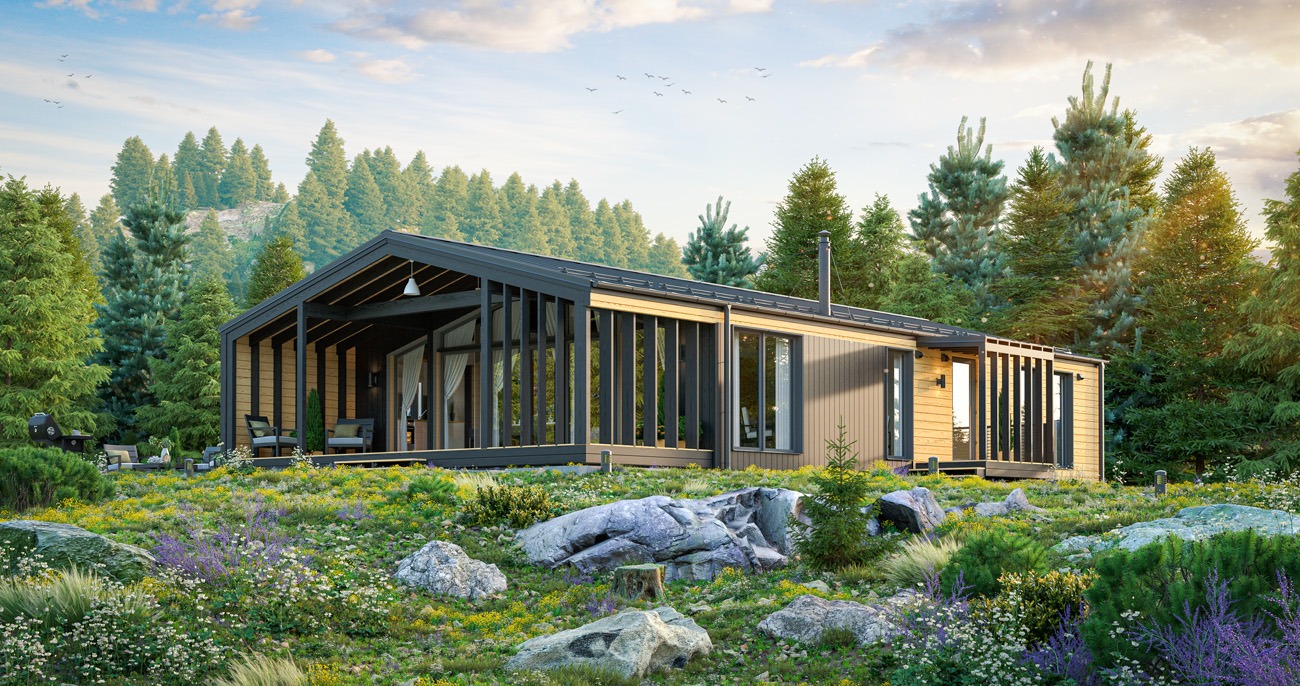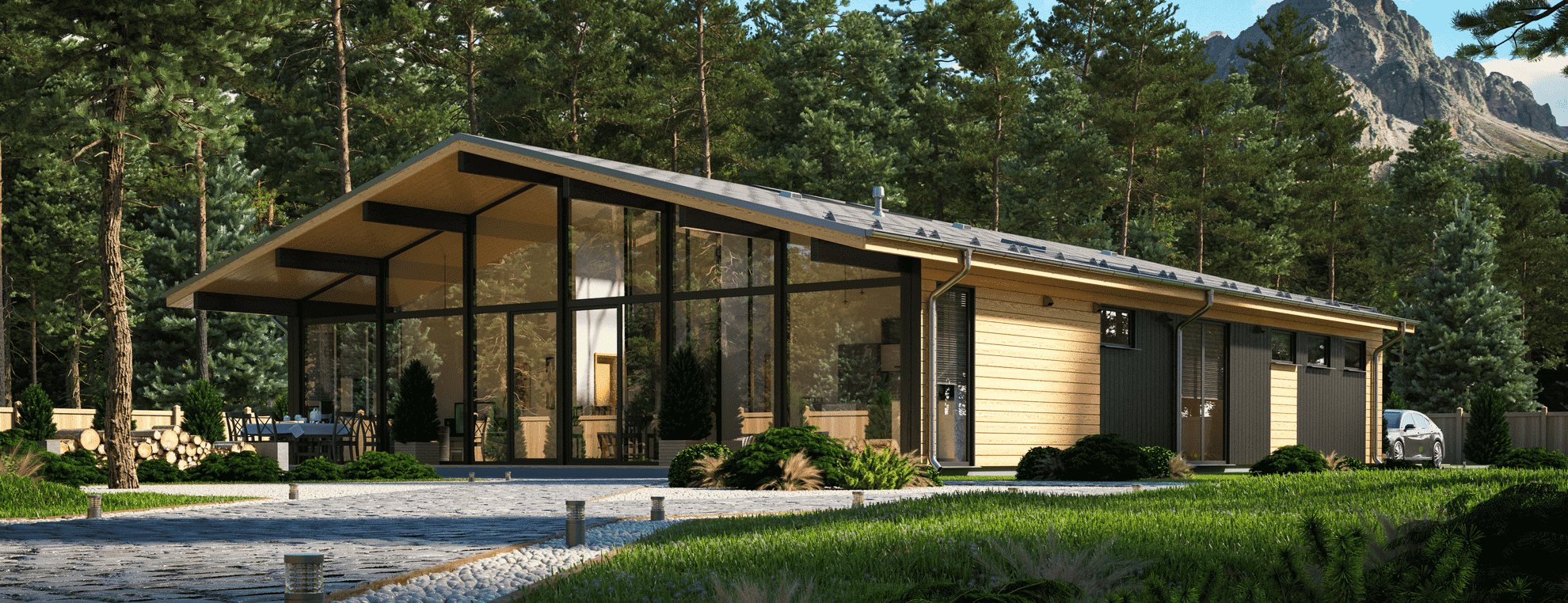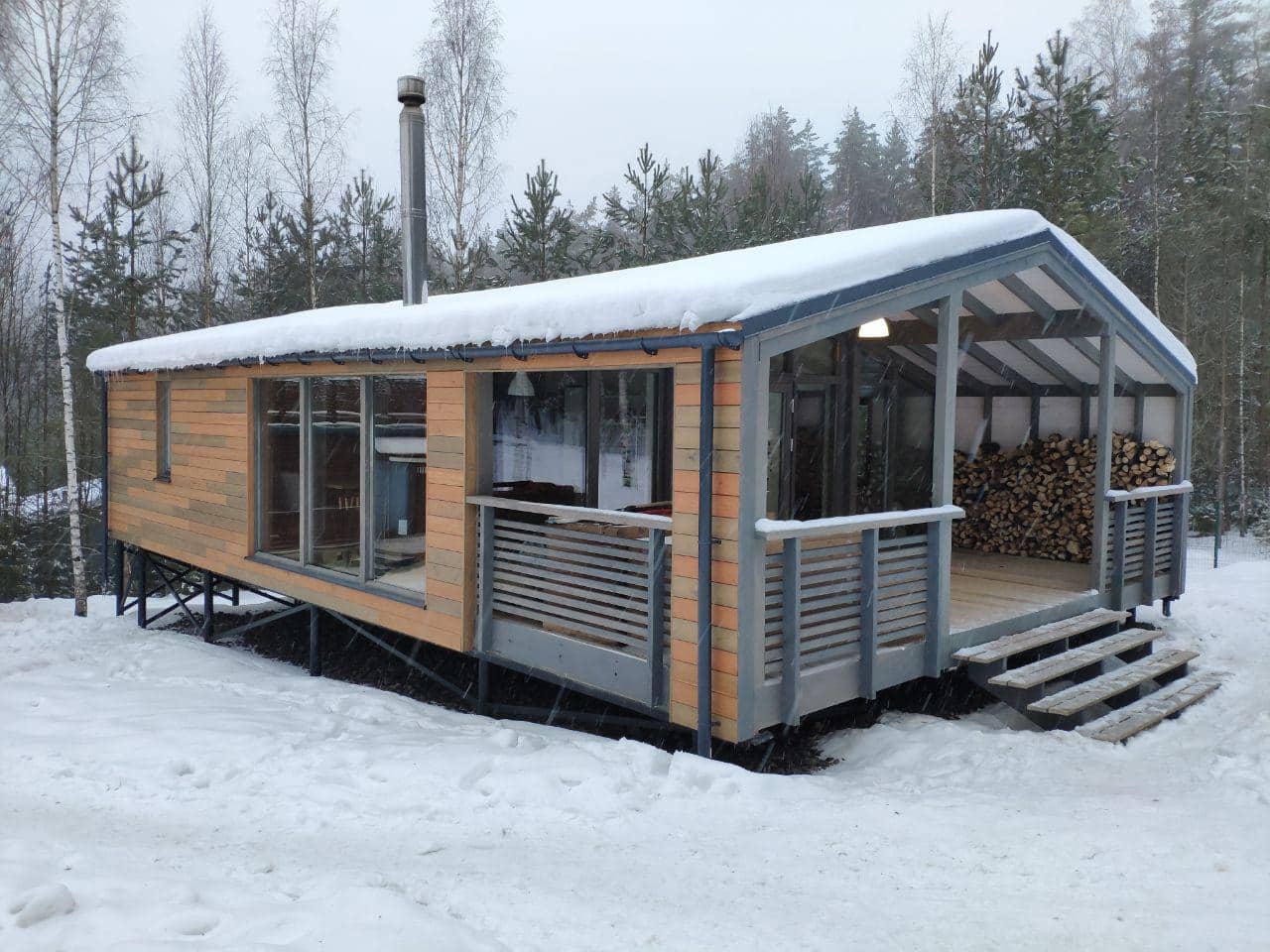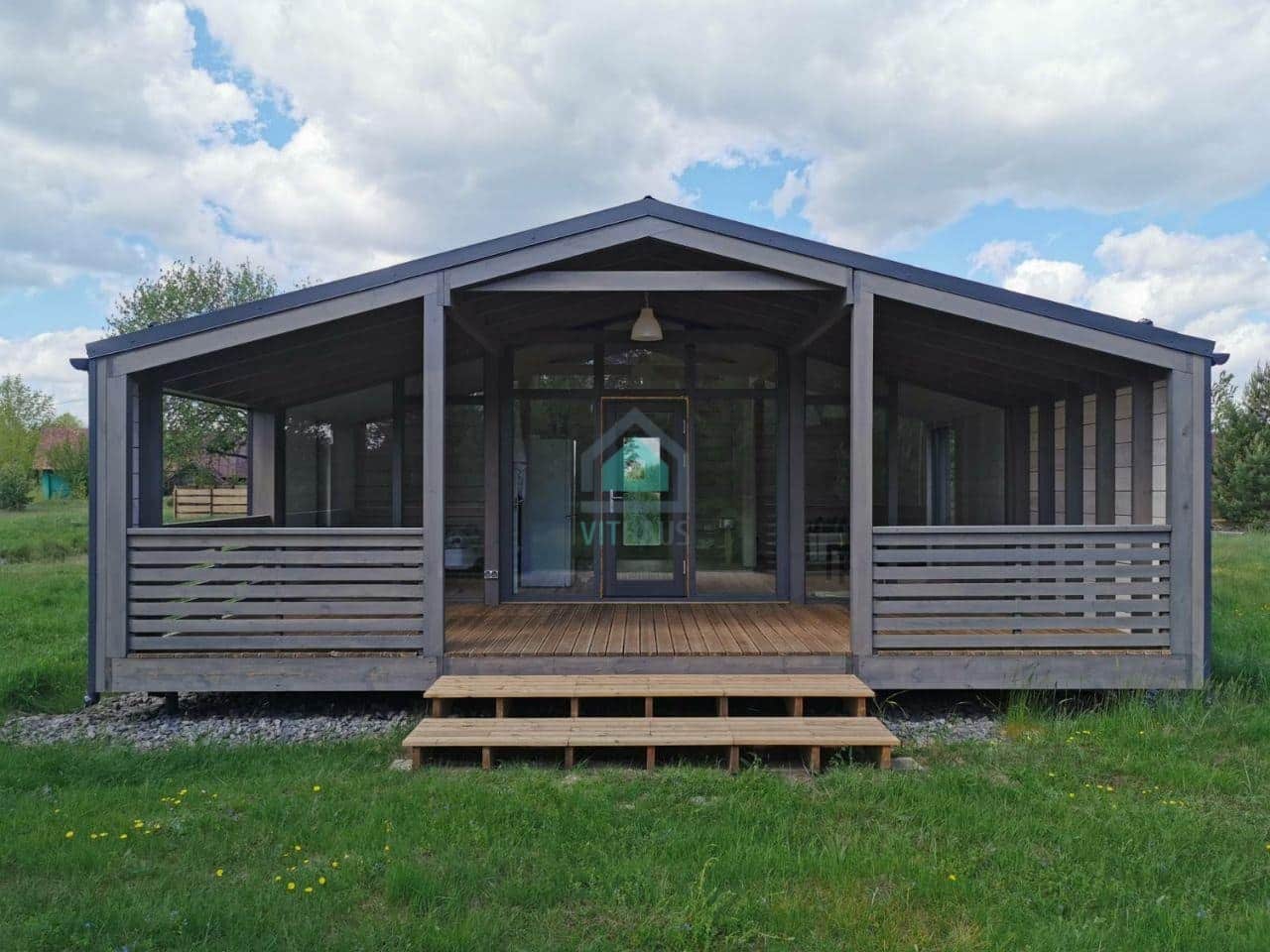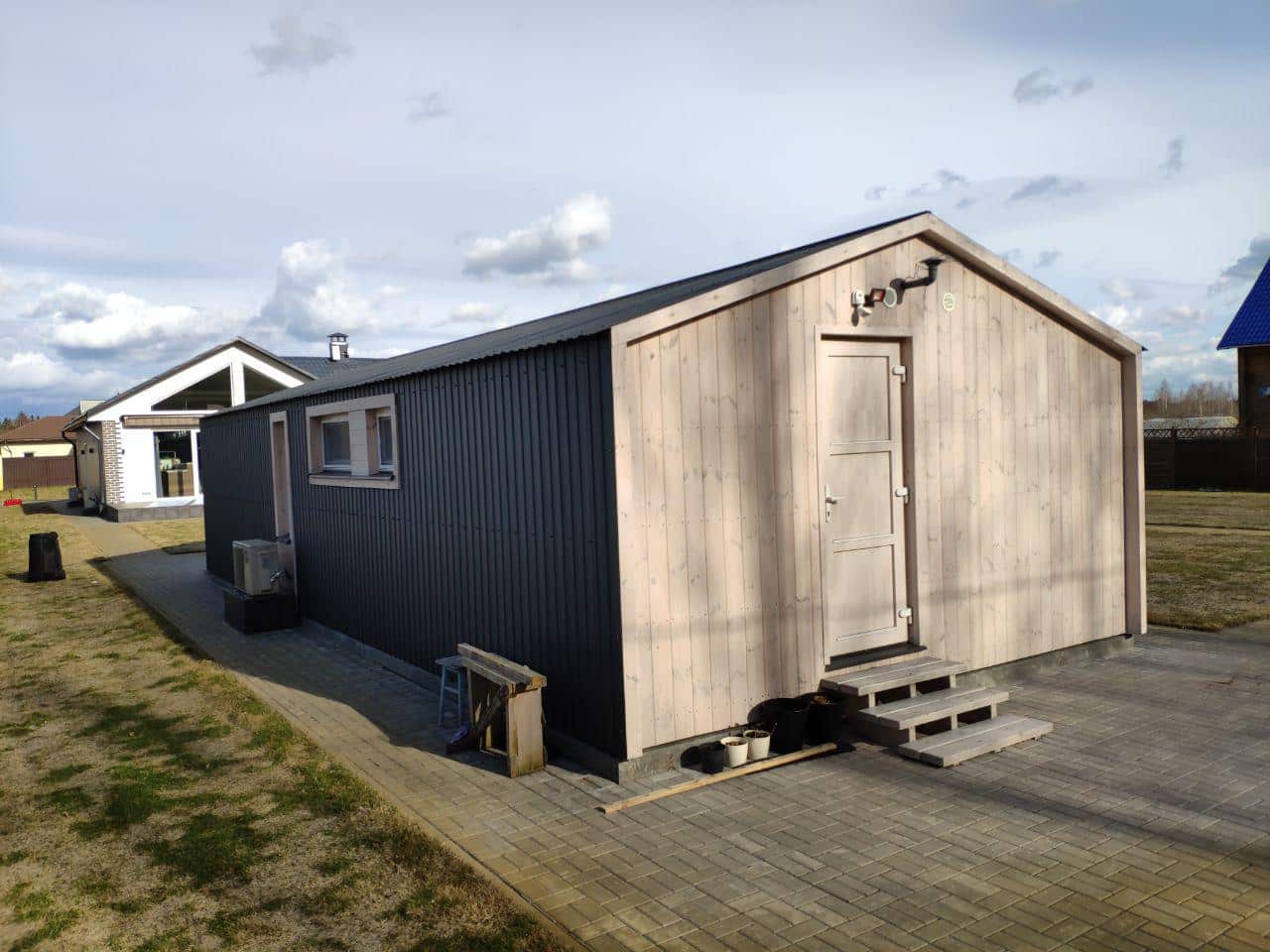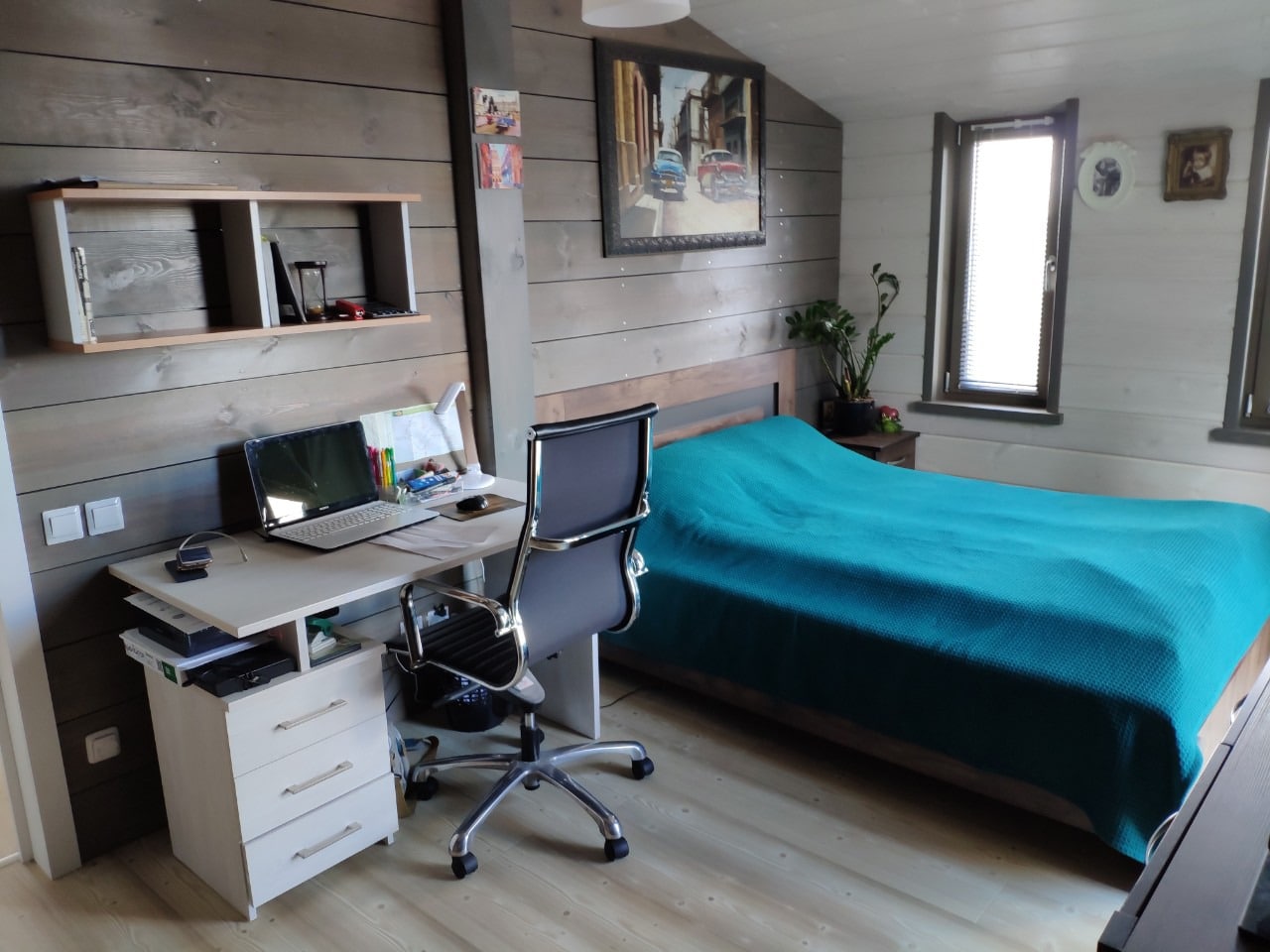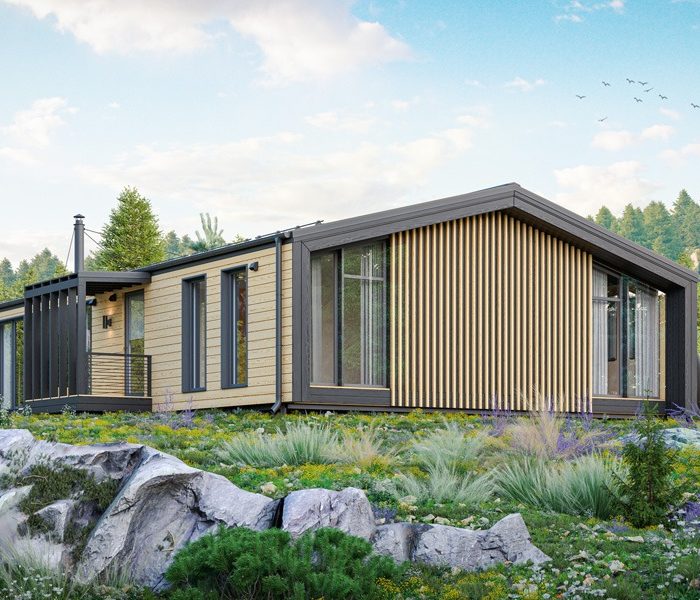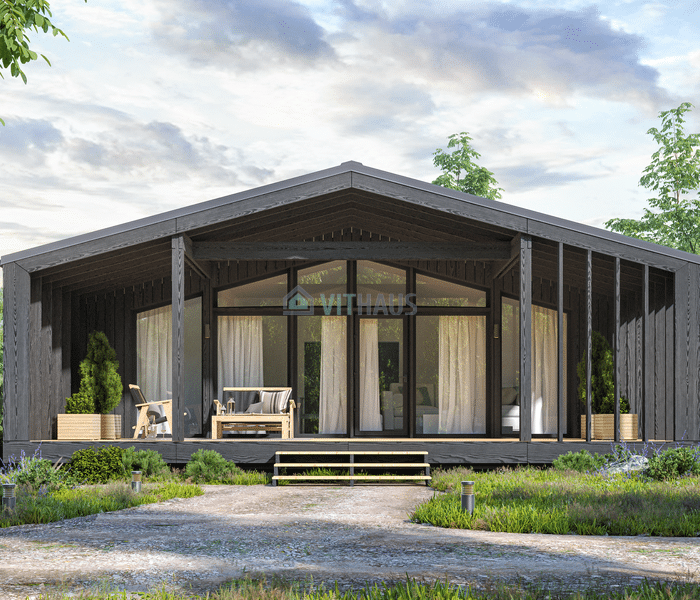
Vithaus
Built in factory. Transported to site. Delivered fully functional.Vithaus promises a very exciting customer journey, emphasizing easiness, affordability, and sustainability. Vithaus website images place their house models in exotic locations, as well as more suburban examples and a hotel constructed of Vithaus modules brought together in a larger structure. The Vithaus design concept is a minimalist, efficient, modern, comfortable log cabin, and one of their models, the BIWI, is a stylish little metal box that could be dropped anywhere to provide compact accommodation. All models can, in theory, be picked up at a later date and installed elsewhere, which could be a huge plus point in the hospitality industry, or even for a homeowner who loves their Vithaus but wants a long-term change of scenery.
Strengths of Vithaus:
Vithaus looks easy. The whole process is promoted as an off-the-shelf customizable product. They offer contractors for the foundations, and foundation design for individual projects, promoting the idea that only lightweight basic foundations are required. The house is produced in a central factory and fully fitted there, then delivered onto its foundations anywhere in Europe, which seems perfect for any client who wants their dream house to appear out of thin air, with minimal logistics. The concept of a fully finished house arriving on a lorry allows a client to be more hands-off during construction/ installation and to schedule a move-in date knowing that the build process is managed in a controlled factory environment, with less risk of delays due to adverse weather or other factors on site. Also, moving house could be easier if the whole house with possessions could be lifted onto a truck and taken to a new location.
Vithaus looks affordable. The construction of a house or modules in a factory is naturally very efficient for materials consumption for various reasons, including that materials can be processed with more precision and offcuts more easily stored for reuse on other projects or onward processing. Labor costs are also reduced over the project because work is more efficient and safer in a controlled factory environment. On a construction site, changing weather is a common cause of inefficiency and delays, along with the challenges of ground conditions, juggling materials in often limited space, and managing the schedule-sensitive flow of contractors such as electricians, window fitters, roofers etc. All of these factors affect build cost, so the house constructed in the factory comes out cheaper but also built more accurately and more safely in the controlled environment.
Vithaus looks eco-friendly. The efficiency of in factory production is a major factor here, but Vithaus also promote an eco-friendly mindset that we’ll cover in more detail later on.
Why their products might not be a good fit:
Design. Like any product or house, aesthetics are a huge deciding factor. The Vithaus designs are quite adaptable, but they do have a strong visual identity, that of a modern clean-lined log cabin, putting aside the BIWI model, which has its own more striking visual identity. You will know immediately if the Vithaus look is a good fit for you or not.
Planning legislation and building regulations vary across the countries where Vithaus deliver too, and Vithaus doesn’t specifically comment on these details on their website. So, before you press the order button, you might find yourself in conversation with the local planning authority and a local architect who can help you to present your Vithaus on your site, along with utility services and other aspects that need to be approved. Planning permission, particularly in an urban environment, might have strict requirements about the building matching its neighbors, or the position of windows to avoid overlooking neighbors.
Do you need a mortgage to purchase your house? Vithaus will be seen by some mortgage providers as a non-standard home, though establishing planning permission and building regulations agreement usually opens up mortgage options. The same applies to insurance providers.
That being said, you will experience these considerations with any non-standard house, and Vithaus promise to support you through it. If you make it through these processes you may be blazing a trail for others to follow.
In Summary:
The Vithaus central concept is efficiency in order to reduce environmental impact, but it also seems that there is still plenty more that they could do to inform customers and promote themselves as an influencer for a better world.
Sustainability
The Vithaus concept is based on optimized factory production and logistics, which reduces environmental impact throughout its processes. Vithaus use predominantly wooden construction, which is a low carbon, low impact material compared to energy-intensive blocks, bricks, concrete or metal, even considering the increased availability of recycled content in these materials. Vithaus doesn’t specify how or where it sources its wood, which can dramatically affect the house’s environmental impact. The website does not show any eco-friendly certifications.
Vithaus point out that their houses are well insulated for comfort and energy efficiency, but there is no discussion about solar panels or other renewable energy technology.
The insulation used is Paroc stonewall, a highly processed energy intensive material, but very compact and well recognized in the construction industry as a fire-safe and moisture-resistant insulation. Whilst not as environmentally inspiring as sheep wool or wood fiber insulation, Paroc actively promotes its zero waste, recycling, and circular economy efforts.
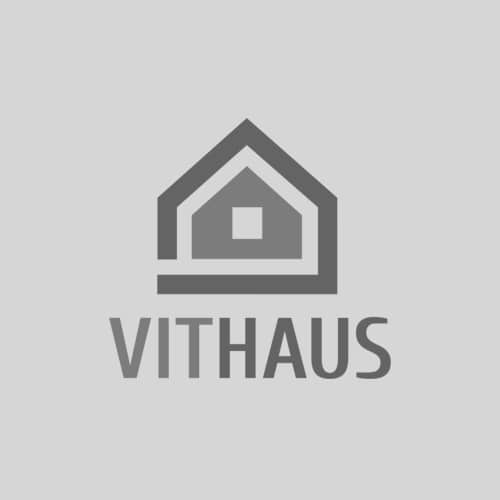
| Company Name | Vithaus |
| Website | vithaus.eu |
| Headquarters | Riga, Latvia |
| Areas served | Europe |
